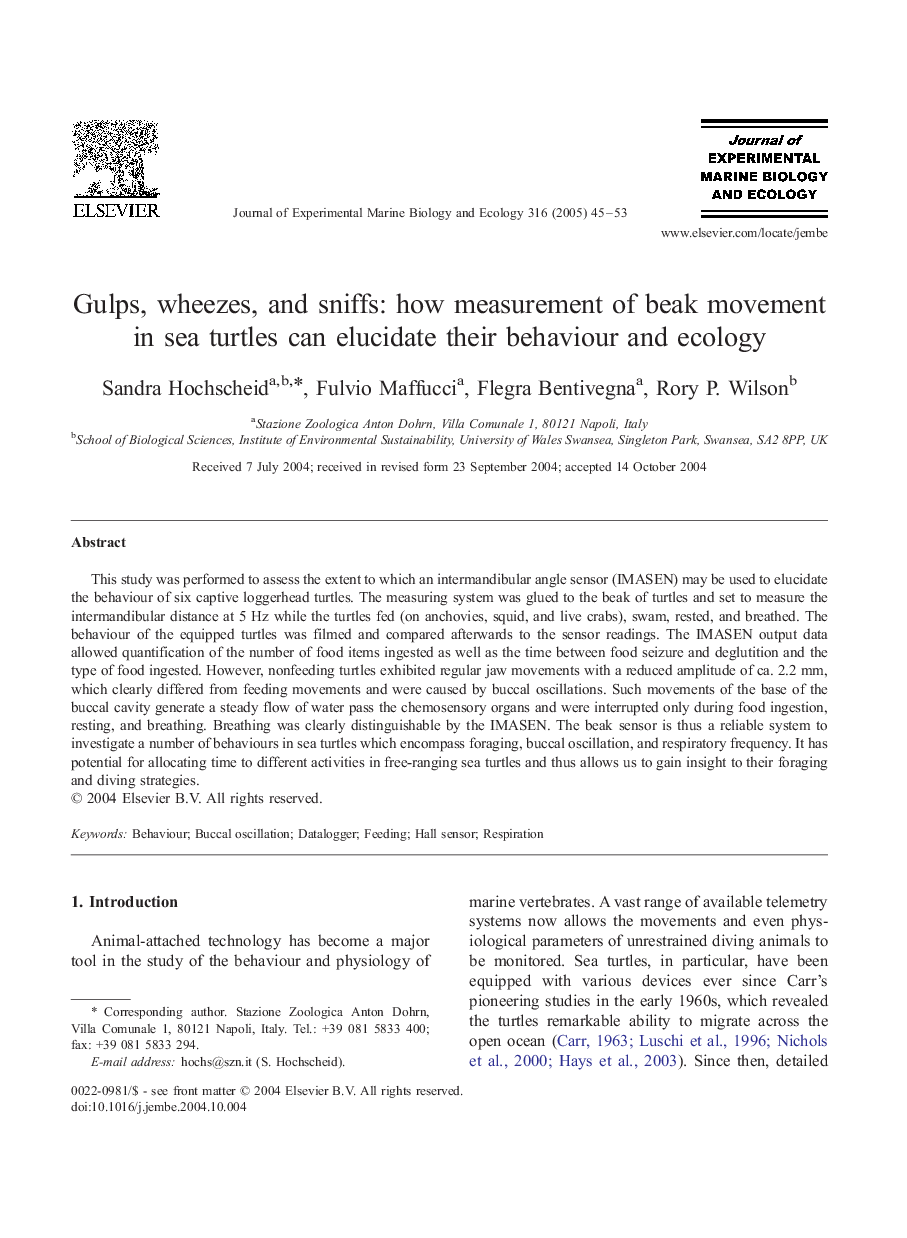| Article ID | Journal | Published Year | Pages | File Type |
|---|---|---|---|---|
| 9448827 | Journal of Experimental Marine Biology and Ecology | 2005 | 9 Pages |
Abstract
This study was performed to assess the extent to which an intermandibular angle sensor (IMASEN) may be used to elucidate the behaviour of six captive loggerhead turtles. The measuring system was glued to the beak of turtles and set to measure the intermandibular distance at 5 Hz while the turtles fed (on anchovies, squid, and live crabs), swam, rested, and breathed. The behaviour of the equipped turtles was filmed and compared afterwards to the sensor readings. The IMASEN output data allowed quantification of the number of food items ingested as well as the time between food seizure and deglutition and the type of food ingested. However, nonfeeding turtles exhibited regular jaw movements with a reduced amplitude of ca. 2.2 mm, which clearly differed from feeding movements and were caused by buccal oscillations. Such movements of the base of the buccal cavity generate a steady flow of water pass the chemosensory organs and were interrupted only during food ingestion, resting, and breathing. Breathing was clearly distinguishable by the IMASEN. The beak sensor is thus a reliable system to investigate a number of behaviours in sea turtles which encompass foraging, buccal oscillation, and respiratory frequency. It has potential for allocating time to different activities in free-ranging sea turtles and thus allows us to gain insight to their foraging and diving strategies.
Related Topics
Life Sciences
Agricultural and Biological Sciences
Aquatic Science
Authors
Sandra Hochscheid, Fulvio Maffucci, Flegra Bentivegna, Rory P. Wilson,
